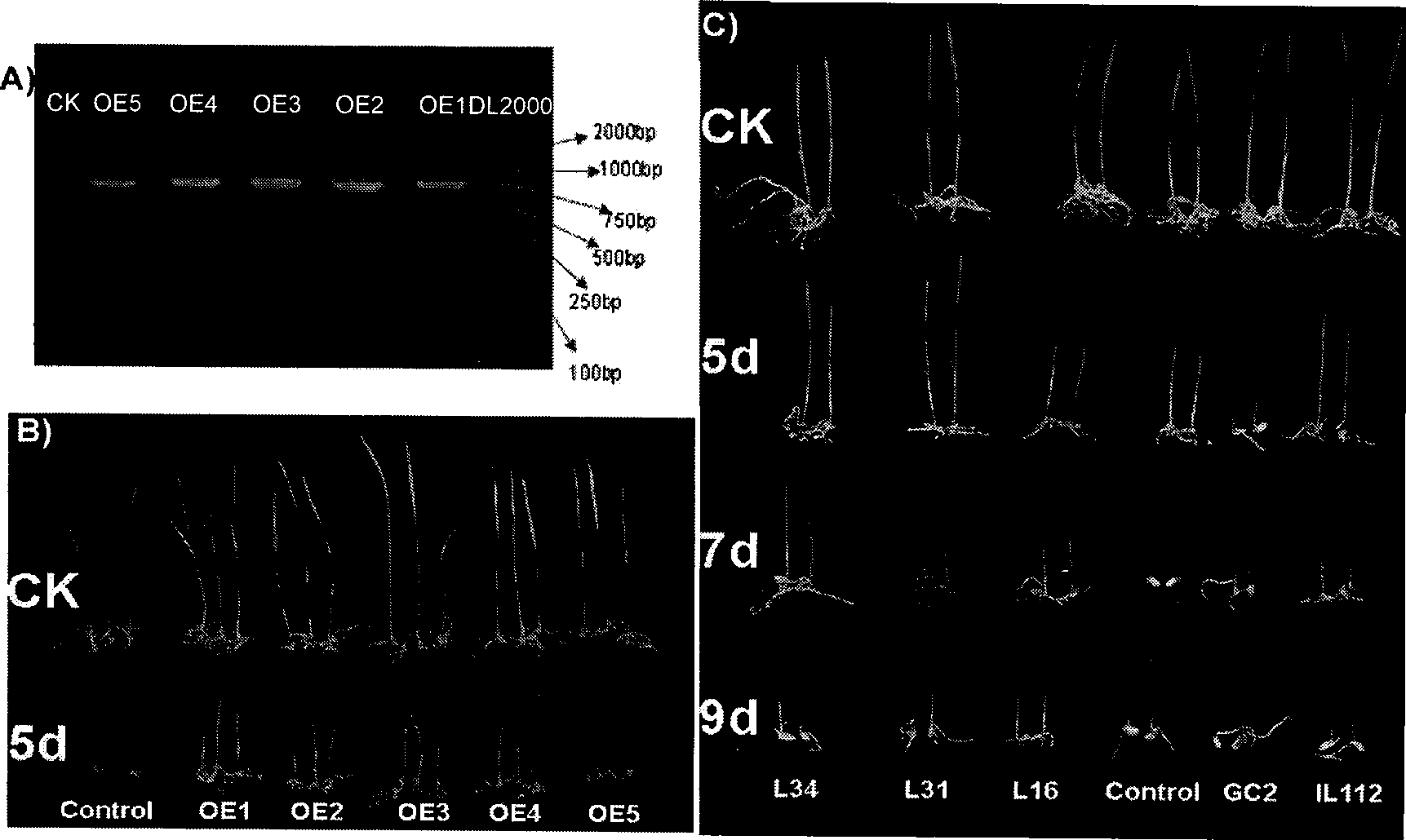Protein related to cold resistance of plant, coding genes and application thereof
A technology encoding genes and cold tolerance, applied to proteins related to plant cold tolerance and its encoded genes and application fields, can solve problems such as genetic bottlenecks, achieve simple operation, improve cold tolerance, and be suitable for popularization and application
- Summary
- Abstract
- Description
- Claims
- Application Information
AI Technical Summary
Problems solved by technology
Method used
Image
Examples
Embodiment 1
[0039] Embodiment 1, the acquisition of the gene LTT7 that improves the cold tolerance of rice bud stage
[0040] First, the Jiangxi Dongxiang common wild rice was backcrossed and self-crossed with the ultra-high-yield rice variety Guichao 2, and a high-generation backcross population (BC) with Guichao 2 as the genetic background was constructed. 4 f 2 group), the cold tolerance of this group was identified at the bud stage, and Lijiang Xintuan Heigu was used as a control. The specific identification method is as follows: soak the seeds of Guichao 2, the high-generation backcross population and Lijiang Xintuan Heigu with 5% (volume percentage) sodium hypochlorite solution for 20 minutes, then rinse with water for 3-4 times, 37 Soak the seeds at ℃ for 1 day, then place the seeds on filter paper soaked in water in glass test tubes, and put the test tubes into the light cultivation room (day temperature 28 ℃, night temperature 25 ℃, light and dark time of 12 hours each day, rela...
Embodiment 2
[0055] Embodiment 2, the acquisition of LTT7 transgenic rice and its cold tolerance identification
[0056] 1. Construction of LTT7 plant expression vector
[0057] The 836bp DNA fragment of the LTT7 gene amplified in the above-mentioned embodiment 1 is cloned into the plant expression vector pCAMBIA1300-35S (this carrier is that the 35S promoter on the PBI121 (Promega company) is utilized endonuclease HindIII and XbaI (TaKaRa company, Numbers are D1060A, D1093A) after digestion and recovery, recombination into the pCAMBIA1300 vector obtained) between the KpnI and SacI restriction sites of the multi-cloning site, a recombinant expression vector containing the rice LTT7 gene was obtained, named pCAMBIA1300-35S- LTT7.
[0058] 2. Obtaining of LTT7 transgenic rice
[0059] The recombinant expression vectors pCAMBIA1300-35S-LTT7 and pCAMBIA1300-35S constructed in step 1 were respectively transformed into mature embryo calli of Nipponbare by particle gun method, and two rounds of...
PUM
 Login to View More
Login to View More Abstract
Description
Claims
Application Information
 Login to View More
Login to View More - R&D
- Intellectual Property
- Life Sciences
- Materials
- Tech Scout
- Unparalleled Data Quality
- Higher Quality Content
- 60% Fewer Hallucinations
Browse by: Latest US Patents, China's latest patents, Technical Efficacy Thesaurus, Application Domain, Technology Topic, Popular Technical Reports.
© 2025 PatSnap. All rights reserved.Legal|Privacy policy|Modern Slavery Act Transparency Statement|Sitemap|About US| Contact US: help@patsnap.com



